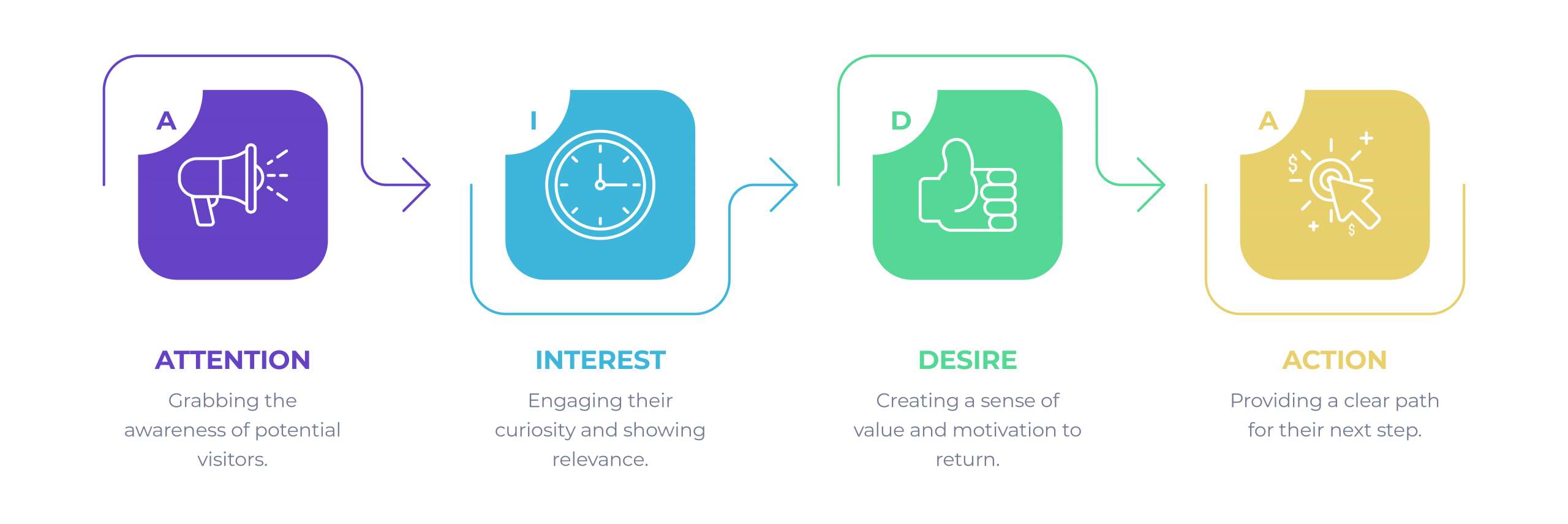Summary: Every pastor wants to see more visitors walk through their doors, and just as important, to see those visitors come back. The challenge is that many church leaders assume it all comes down to preaching a great sermon or having powerful worship. While those things matter, people’s decisions to return often involve deeper psychological factors, not just spiritual ones.
A simple framework called the AIDA model (Attention, Interest, Desire, and Action) maps the path people follow when deciding whether to stay connected or walk away. Understanding these four steps can help you close the back door and keep more visitors engaged.
The AIDA Model

1. Attention: Get Noticed
Before someone visits, something must capture their attention. It might be your church sign, a Facebook post, or your website. If those first impressions are outdated, confusing, or uninviting, people may never even step inside. In fact, research shows that most visitors check out a church online before attending in person (Pushpay).
Take a fresh look at your online presence and ask yourself, “Would this make someone curious enough to visit?” If not, it may be time to update.
For tips on building an effective and engaging website, read Is Your Website Helping or Hurting Your Church.
2. Interest: Make Them Feel Welcome
Once a visitor arrives, their first question is simple: “Do I fit here?” And surprisingly, this has less to do with your sermon and more with how friendly the greeters are, how safe and welcoming the children’s ministry feels, and how easy it is to follow the service. Interest grows when people feel comfortable and connected.
According to research, our brains form impressions of new people and environments in less than a tenth of a second, before rational thought can even step in (Princeton.edu). That means the small things, like smiles and clear signage, matter more than we often realize.
Visitors are more likely to return when they see that your church can make a meaningful difference in their lives.
3. Desire: Give Them Hope
Connection and belonging are what move someone from being a guest to becoming part of the family. Often this shift happens when visitors can picture themselves thriving in your church. They might notice how God is changing others, feel inspired by the worship, or sense a personal spark of hope in the teaching. At this point they might be thinking, “Could this be the place where I find community, healing, or purpose?”
This is why sharing transformation stories and clear testimonies matters so much. They don’t just inspire. They help people imagine their own lives being changed.
4. Action: Show the Next Step
Finally, if someone is interested, you need to make their “next step” obvious. Without guidance, visitors often remain on the sidelines. Whether it’s filling out a connection card, stopping by a welcome center, or signing up for a small group, the action must be simple and clear. Clarity eliminates the guesswork and removes the barriers between attending and belonging.
Final Thought
Growth doesn’t happen by chance. People decide to stay when churches intentionally guide them through these four steps. Start by improving just one area. Maybe it’s your website’s first impression or the clarity of your next steps. You’ll be amazed at the effect these small changes can have on your church’s growth.
Not sure where to begin? My FREE Church Health Assessment will help you pinpoint what’s holding your ministry back and show you the best next step forward.





